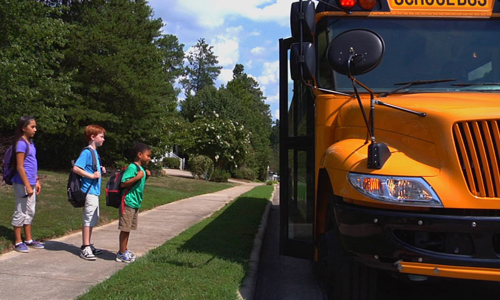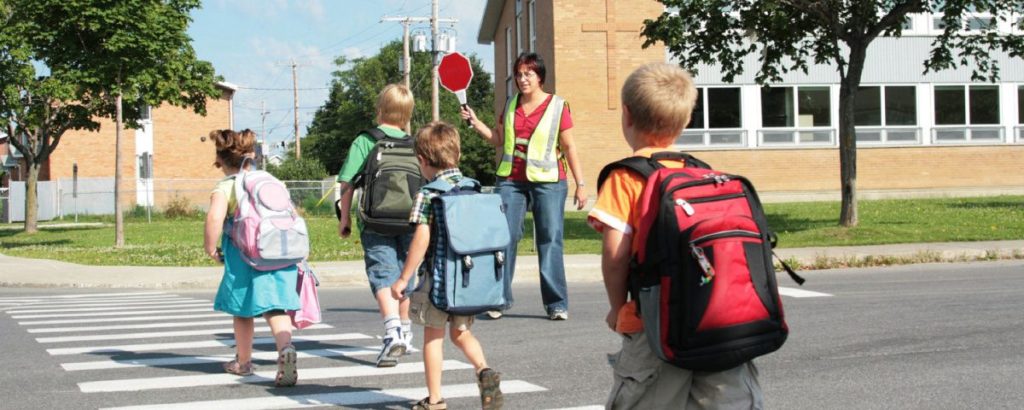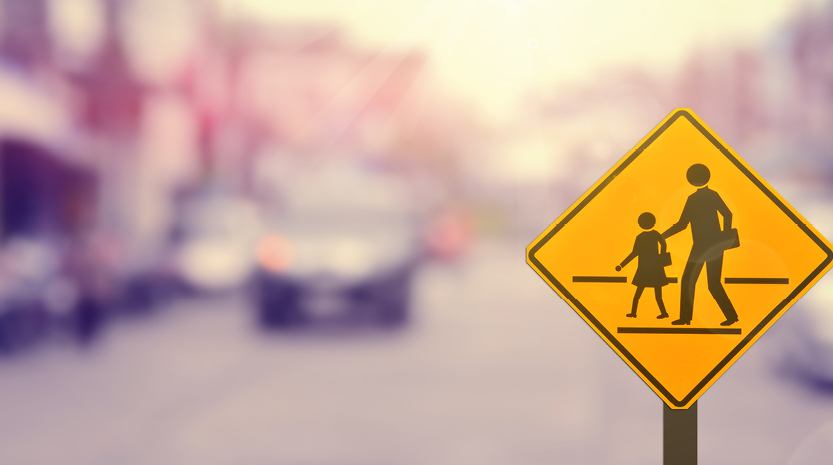The month of September often means getting back into school routines, packing lunches, after school sports and extracurricular activities and student’s favorite…homework!
The month of September often has connotations of new beginnings, fresh starts, and hopefulness for a great year to come. As an injury prevention specialist, this month is a time to remind all families of how they can make the upcoming year is a safe one, free of injury.
The following are some of the most important safety topics to think about as a new school year begins:
Safety regarding physically getting to and from school
There are a many in which students travel between home and school – some walk, some take the school bus, and some are dropped off by an adult. All of these transportation methods come with their own risks and safety reminders.

Bus Riders to School
Students should be reminded of how to safely stand to wait for a bus and how to cross the street when a bus is present. Students should stand 6 feet away from the curb to allow plenty of space when the bus stops at the bus stop. When a child needs to cross the street in front of the bus, they need to walk 10 feet ahead of the front of the bus so that driver can see them crossing.
In addition to safety getting to and from school, there are many other safety reminders to help get the school year off to a great new start.
- Backpacks should be carried using BOTH straps, in order to evenly distribute the weight of the backpack. Students should not carry more than 5-10% of their weight in the backpack. Overstuffed back packs can lead to back injuries and tripping because of the excessive weight.
- Playgrounds can be a great place to get exercise and take a mental break from learning. Children should not wear necklaces or scarves as these can get caught and cause strangulation or tripping hazards. Though September is the gateway to fall, it is often warm enough in many places to still wear flip-flops and sandals. Make sure your child is wearing the appropriate shoes for outside play.
- Handwashing is important. This simple task after using a tissue, before eating and after using the restroom can decrease the spread of germs and decrease risk of illness.
Walkers to School
Every student should know the safest route of travel between home and school. This plan should be reviewed each year. Students should walk on the sidewalk, when possible or facing traffic if no sidewalk is available. Simply looking left, right, left will help to determine when it is safe to cross the street and crossing at an intersection is safer than crossing in the middle of the street. Even at intersections, students should make eye contact with stopped cars before beginning to cross. Lastly, stay alert – yes, no earphones or music. Students should be able to hear what is happening around them – a car or person coming up behind them, an emergency siren, or even dog running after them. Students should put their phones away and avoid walking and texting as injuries can occur from a missed step or simply not paying attention.

Parent Drop Off
This safety reminder is more for the adults. Make sure you drive the speed limit in school zones and follow the drop-off procedure for your student’s school. Drop-off and pick-up can be an extremely busy time of day at a school with a lot of vehicle and pedestrian movement. Make sure you keep eye contact with those crossing the street and NEVER pass a bus that is loading or unloading.

Maryland TraumaNet wishes each of you a wonderful and safe school year!
Reference
National Safety Council (2022) Back to school safety checklist. https://www.nsc.org/community-safety/safety-topics/school-safety/school-safety-home
Blog summitted by:
Kelly Llewellyn, MSN, RN
Injury Prevention/EMS Specialist
Safe Kids Washington County
Meritus Health


